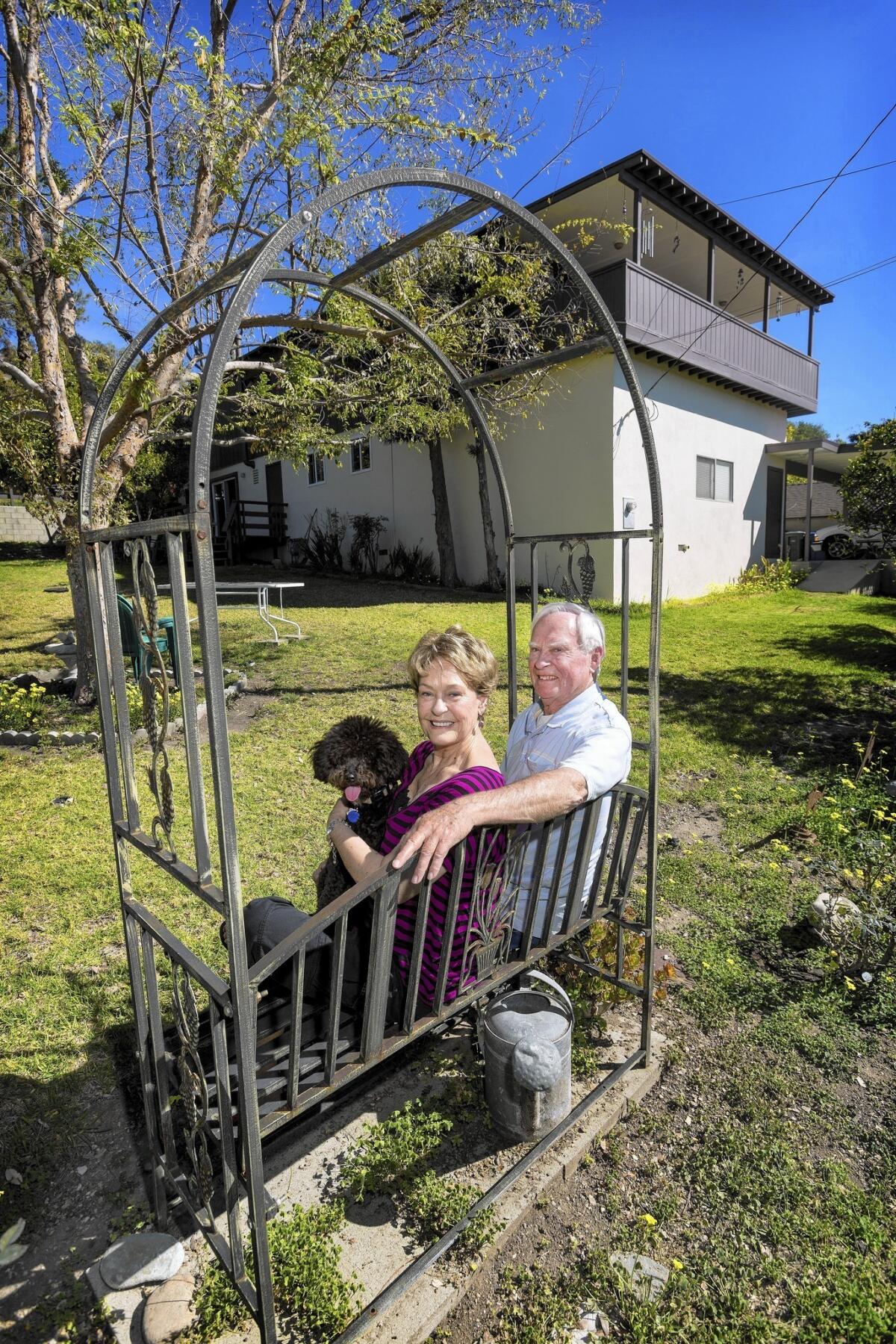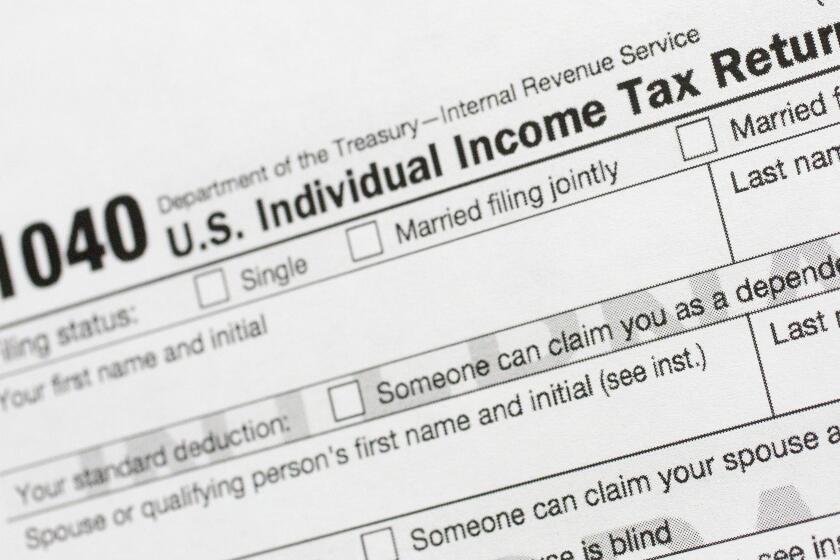Owners again borrowing against homes as housing market recovers

Retired aerospace engineer Owen Klasen was rejected last year when he sought a second mortgage to paint and re-roof his house.
Home prices hadn’t risen enough, the loan officer told him.
But last month, the same loan officer offered him more than double the credit he needed.
“I told him I needed $25,000” on a home equity line of credit, said Klasen, who lives in Fillmore in Ventura County. “He said we were qualified to go up to $60,000.”
Klasen is among a wave of homeowners in California and nationally who are again putting their homes in hock — despite the costly lessons of the housing meltdown.
After a home equity credit binge during the housing bubble, banks shut off the tap as home prices plummeted. Sobered homeowners stopped viewing equity as free money for cars, vacations and college educations.
But now second mortgages are back in vogue. Homeowners in the six-county Southern California region took out 47,542 home equity lines of credit last year — 48% more than in 2012, according to research firm DataQuick. The median credit line was $100,000.
The same trend is taking hold nationwide. Bank of America, for instance, saw its home equity business surge 75% last year compared with 2012, said Matthew Potere, who oversees home equity lending for the Charlotte, N.C., giant. In the fourth quarter, BofA issued $1.9 billion in new home equity credit lines, up from $1 billion a year earlier.
In Southern California, the heaviest borrowing is in the wealthiest neighborhoods, where prices are closer to their peaks during the bubble, DataQuick figures show. Orange County’s Villa Park, with a median home price topping $1 million, had the highest rate of equity credit approvals last year.
But homeowners in the affordable Inland Empire also took out more equity credit lines.
“You are seeing national home prices rising,” said Kelly Kockos, Wells Fargo’s senior vice president of home equity. “It’s no longer just the coastal markets.”
The most popular use of equity lines is home improvement, followed by debt consolidation, Kockos said. But some borrowers are using the credit to double down on real estate, a popular move during the housing bubble.
Adam and Kimberly Smith work at high-tech firms in San Francisco, where prices skyrocketed last year. They recently obtained a credit line on their two-bedroom North Beach condominium. The couple, in their early 30s, plan to rent out the condo and buy a home in the high-end East Bay suburbs.
Three-bedroom homes there start at $1 million. Borrowing $50,000 to $100,000, combined with their savings, will give them a 20% down payment on the suburban home they crave.
“We know we can make an offer this weekend,” Adam Smith said.
Home equity lines of credit are a type of variable-rate second mortgage. They enable homeowners to borrow up to a pre-defined amount at their discretion.
A homeowner with a $200,000 first mortgage on a $400,000 house, for instance, might take out a $100,000 line of credit. If the homeowner borrowed the maximum, the mortgage debt would total $300,000 — 75% of what the house would bring in a sale.
The volume of new home equity credit lines in Southern California increased slowly in 2011 and 2012 before surging last year, along with home prices. In the six-county region, lenders approved borrowers for $6.9 billion in the credit lines last year, 51% more than 2012, DataQuick said.
The San Diego research firm said January median home prices were 22% higher than a year earlier in Ventura County, about 20% higher in Los Angeles and Orange counties, and 24% higher in San Bernardino County.
Nationally, the total of second mortgages authorized climbed to an estimated $60 billion last year from a low of $49 billion in 2010, according to the trade publication National Mortgage News. That’s still way down from a record of $430 billion in 2006, but experts predict another surge in home equity lending this year.
For lenders, the credit lines are riskier than first mortgages, which would be paid off first in case of a foreclosure. Still, these are no longer the easy-money loans of the housing boom, bank officials assure. Applicants who get approved today have high credit scores, along with ample savings and equity in their homes.
During last decade’s housing boom, the standards were quite different — sometimes nonexistent. Banks have lost billions on loan defaults from that era.
The losses aren’t over. The way the credit lines are structured has created a new problem — payment shock on credit lines issued during the bubble. That’s because the credit eventually runs out. At that point, often 10 or 15 years later, borrowers must pay back the entire amount or make set payments on the debt monthly, as with a traditional loan.
That can cost borrowers hundreds of dollars a month extra — payment shocks that will reverberate as the credit lines come due. National bank regulators have calculated that the draw periods will end for $29 billion in home equity credit lines this year at the nine largest U.S. banks. Those numbers rise to $52 billion next year, $62 billion in 2016 and $68 billion in 2017.
Officials at Bank of America and Wells Fargo & Co. said they have begun reaching out to borrowers well in advance of the date their credit lines mature, making sure that they are prepared for higher payments and, if necessary, talking about modifying the terms of the credit lines.
Meanwhile, lenders are wading back into the business of issuing new home equity credit. In high-end markets, which recovered first, some borrowers are using home equity credit lines of $100,000 to $250,000 “as a financial tool” to buy more real estate, said mortgage broker Richard T. Cirelli in Laguna Beach.
Klasen, the Ventura County homeowner approved for a credit line last month, has more modest ambitions. He and his wife, Wana, bought a new washer and dryer in addition to the painting and roofing work. .
“We’re putting the money back into the house,” he said.
More to Read
Inside the business of entertainment
The Wide Shot brings you news, analysis and insights on everything from streaming wars to production — and what it all means for the future.
You may occasionally receive promotional content from the Los Angeles Times.











